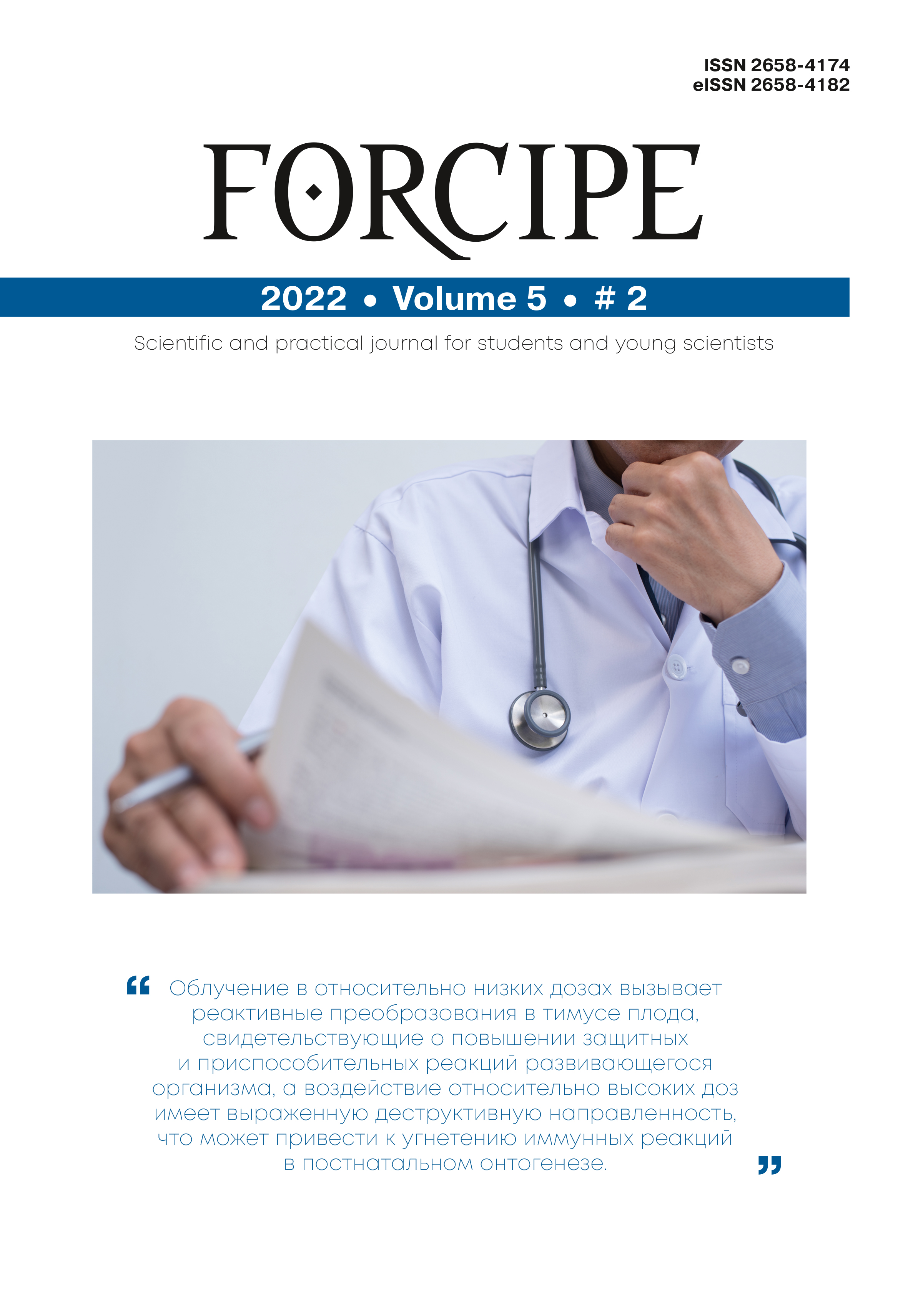TO THE QUESTION OF FORMATION OF THE MANDIBLE OF THE FETUS IN THE INTERMEDIATE FETAL PERIOD OF HUMAN ONTOGENESIS
Abstract
To implement the principles of prediction and prevention in prenatal medicine, it is necessary to expand the scope of fundamental research on human fetal anatomy. The aim of the study was to obtain new data on the formation of the mandible of the fetus in the intermediate fetal period of human ontogenesis. Materials and methods. The study was carried out on 110 mandible of human fetuses of the second trimester, divided into groups by sex and age, using morphological techniques and the method of ultrasound scanning. Results. In fetuses of the second trimester, the average value of the dimensions of the mandible was: the length of the alveolar arch 47.8±12.1 mm, the angular width 21.9±5.8 mm, the projection length 17.6±5.1 mm, the height of the branch 14.4±2.8 mm, smallest branch width 8.9±2.6 mm. An inverse negative correlation was noted between the angle of the mandible and the age of the fetus. Fetal patterns were revealed in the location and movement of the opening of the mandible and the mental opening with the growth of the fetus. In the alveolar arch, dental alveoli are determined using morphological techniques in all groups and with ultrasound scanning from the 19th week of the prenatal period. They contain the rudiments of 10 milk teeth and 2-3 permanent teeth. Starting from the 19th week of intrauterine development, significant sex differences are revealed: the angle of the mandible prevails in female fetuses, from the 24th week of intrauterine development, the angle of the mandible and the projection length are greater in female fetuses, the angular width in male fetuses. The fetal profile line in all cases was “zero”, the angle between the lines of the maxilla and mandible was 13.1°±0.3. Conclusion. Information about the anatomical structure of the mandible in normal second trimester fetuses is of interest for supplementing fundamental knowledge about its development in a given age period and is of applied importance for the detection of congenital malformations and their surgical correction.



